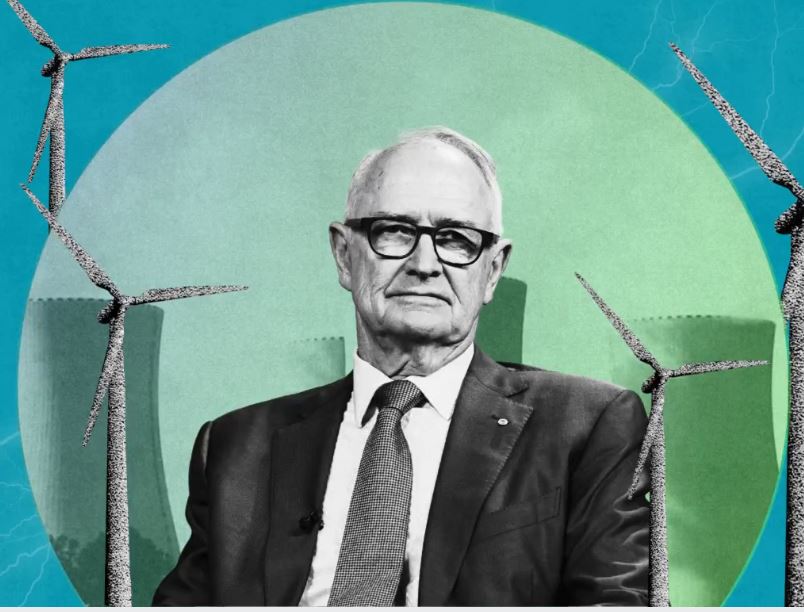
Article by Adam Creighton, courtesy of The Australian
01.08.2025

In 2004 The Guardian catastrophised that Britain faced a “Siberian climate” by 2020. In 2008, former US vice-president Al Gore said the Arctic could be entirely ice-free within five years. In 2014 French foreign minister Laurent Fabius said the world had “500 days before climate chaos”. And two years ago the UN secretary-general declared that the “era of global boiling (had) arrived.”
Unless Australia slashed its 1.1 per cent contribution to greenhouse gas emissions, fruit and vegetables would become a “once-a-year treat”, according to UN climate tsar Simon Stiell, who delivered this warning in Sydney on Monday.
Hours later, climate change economics guru Ross Garnaut said the government would fall short of its existing emission and intermittent energy targets “by a big margin” – let alone the more ambitious targets Chris Bowen is poised to announce. I wouldn’t start stocking up on vitamin C.
The diminishing returns to hysteria and fearmongering isn’t the only problem facing the emissions reduction juggernaut. The rationale for replacing fossil fuels with wind and solar power are crumbling too, as Garnaut’s history of failed predictions and mistaken analyses makes clear
Launching his 2019 book, Superpower, Garnaut declared he had “no doubt that intermittent renewables could meet 100 per cent of Australia’s electricity requirements by the 2030s, with high degrees of security and reliability, and at wholesale prices much lower than experienced in Australia over the past half dozen years”.
Six years later that’s become a fanciful scenario: wholesale electricity prices have roughly tripled from a decade ago, and reliability has tanked. Australian Energy Market Operator chief Daniel Westerman this week revealed the number of interventions to stave off blackouts had exploded from six in 2016 to 1800 last year.
“Since the summer of 2016-17, the Tesla big battery, other batteries, the government’s gas turbines, and more attentive regulatory agencies have made South Australia possibly the most secure region within the National Energy Market,” he said.
It’s a combination that has also given the state – which turned off its last coal power station in 2016 – the most expensive power in the country. In January SA sought to switch on two diesel generators as it scrambled to upgrade interconnector cables to NSW and Victoria to maintain grid stability.
Still, it’s especially puzzling that Professor Garnaut is still worshipped as some sort of energy policy oracle after championing the idea “green hydrogen” – the alleged underpinning of our future “renewable superpower” status – could be anything other than a trendy boondoggle borne of scientific illiteracy.
The electrolysis process that is used to produce it chews up vastly more energy than what remains in the “green hydrogen” thus produced. No wonder 99 per cent of $100bn worth of “green hydrogen” projects have failed to progress in Australia, according to Rystad Energy, practically all of which have received some form government support.
Of the half-dozen “coloured” types of hydrogen identified by the CSIRO, Garnaut should be backing “pink”, if any. That’s not, as you might have thought, hydrogen produced by an LGBTI workforce but rather by nuclear energy, which Garnaut must know Australia needs to develop should it have any serious shot at meeting long-term emissions reductions targets. Speaking in 2011, Garnaut said Australia’s lack of action was “exercis(ing) a veto over effective global mitigation”, while lauding China for its supposed determination to reduce emissions.
The rest of the world appears to have taken little notice of our efforts since. According to the publicly available Climate Action Tracker,which “tracks government climate action and measures it against the globally agreed Paris Agreement”, practically every country in the world is falling short of its Paris emissions goals.
The efforts of India and China, home to more than 40 per cent of the world’s population, are rated “highly insufficient”, which isn’t surprising given their voracious appetite for Australian coal.
China pays lip service to emissions reductions targets, and is spending significant sums on intermittent power, but it also has a massive geopolitical interest in convincing the rest of the world to rely more on solar energy, the component supply chain for which it dominates. The CCP plays a long game.
Hardly any of the world is taking emissions reduction seriously, except for Australia, Europe and Britain, well below 30 per cent of global GDP. Recall Russia, a massive fossil fuel exporter that would probably benefit from global warming, has signed up to the Paris agreement. Carbon dioxide emissions continue to rise every year, even before Africa’s and India’s economic development begins to accelerate.
“We will not allow a windmill to be built in the United States,” Donald Trump told reporters in Britain this week, signalling the US is no longer remotely part of the net zero club either. In July congress rescinded hundreds of billions of dollars worth of Biden-era solar and wind subsidies, while Trump’s Environmental Protection Agency this week said it would no longer classify carbon dioxide as a pollutant.
“This has been referred to as basically driving a dagger into the heart of the climate change religion,” Commissioner Lee Zeldin said.
In his speech this week Garnaut praised as “herculean” the Albanese government’s efforts to reduce emissions. Indeed, Canberra has more than trebled the budget cost of promoting intermittent energy, legislated a de facto emissions trading scheme via the Safeguard Mechanism (which will cost Australian industry even more than Trump tariffs) and begun to nationalise household electricity bills. If “herculean” is not enough, perhaps the targets themselves are unattainable?
Unfortunately, Chris Bowen is likely to double down on ever more ambitious targets, which remain superficially popular among a voting public that is clueless about the economic and technological realities. A major blackout or further, large unanticipated increases in power prices in coming years could easily be blamed on the net zero crowd.
Adam Creighton is chief economist at the Institute of Public Affairs.